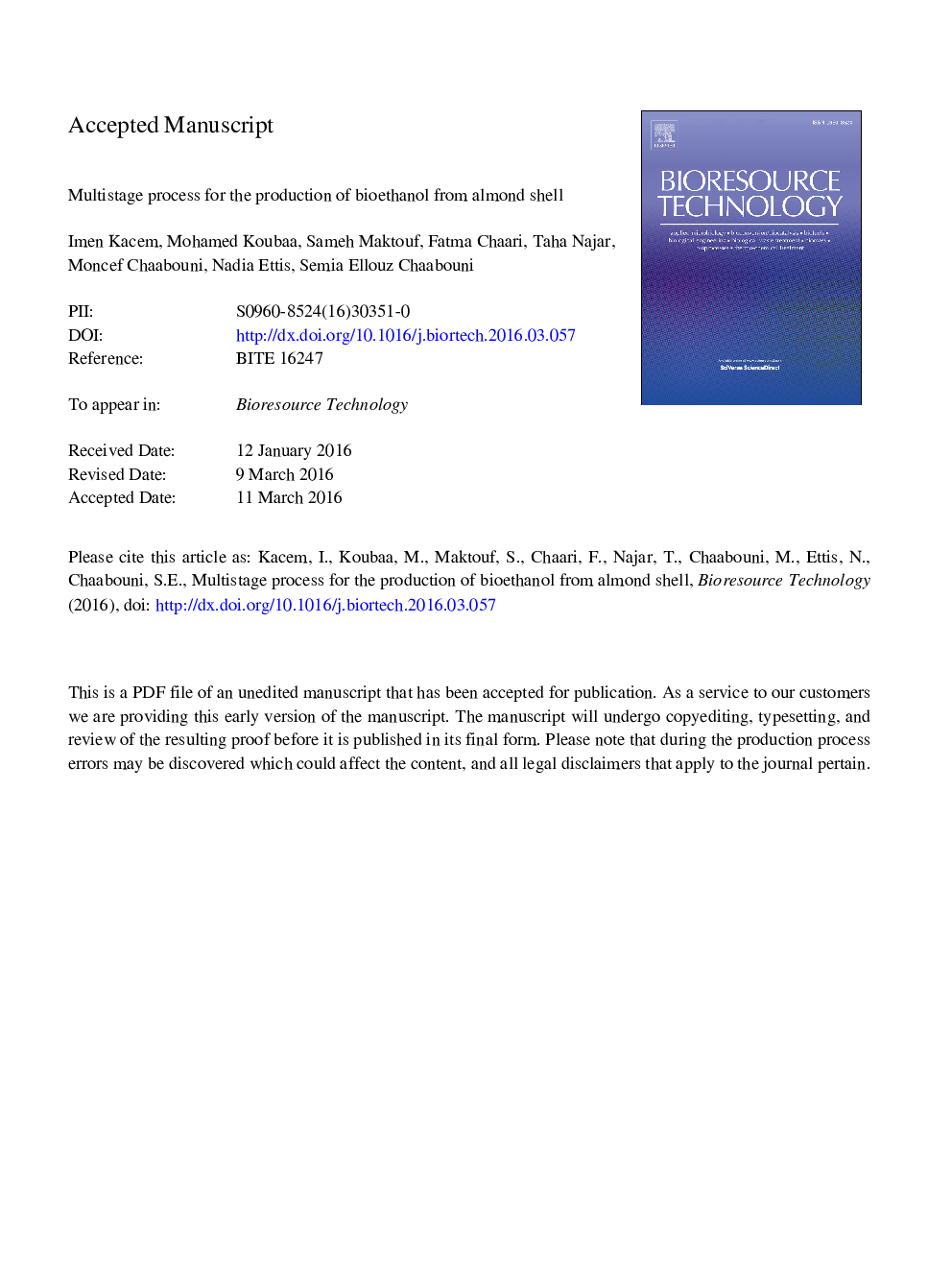| Article ID | Journal | Published Year | Pages | File Type |
|---|---|---|---|---|
| 7071726 | Bioresource Technology | 2016 | 36 Pages |
Abstract
This work describes the feasibility of using almond shell as feedstock for bioethanol production. A pre-treatment step was carried out using 4% NaOH for 60 min at 121 °C followed by 1% sulfuric acid for 60 min at 121 °C. Enzymatic saccharification of the pre-treated almond shell was performed using Penicillium occitanis enzymes. The process was optimized using a hybrid design with four parameters including the incubation time, temperature, enzyme loads, and polyethylene glycol (PEG) concentration. The optimum hydrolysis conditions led to a sugar yield of 13.5%. A detoxification step of the enzymatic hydrolysate was carried out at pH 5 using 1 U/ml of laccase enzyme produced by Polyporus ciliatus. Fermenting efficiency of the hydrolysates was greatly improved by laccase treatment, increasing the ethanol yield from 30% to 84%. These results demonstrated the efficiency of using almond shell as a promising source for bioethanol production.
Related Topics
Physical Sciences and Engineering
Chemical Engineering
Process Chemistry and Technology
Authors
Imen Kacem, Mohamed Koubaa, Sameh Maktouf, Fatma Chaari, Taha Najar, Moncef Chaabouni, Nadia Ettis, Semia Ellouz Chaabouni,
